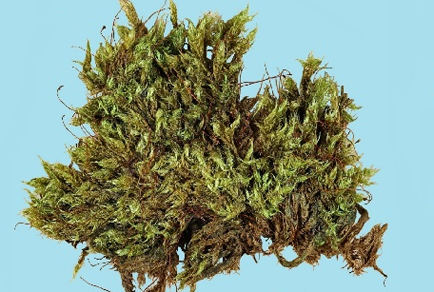Abstract
Warburgiella spinososeta is described and illustrated as a new moss species and a new genus record from Hawaiʻi. The new species is morphologically similar to W. cupressinoides and W. leptorhynchoides to some extent, but it differs in having entirely smooth, strongly thick-walled, porose laminal cells, a strikingly spinose upper seta, and a campanulate-cucullate calyptra with a papillose apex and an entire base.
Downloads
Download data is not yet available.
References
- Anderson, L.E. (1954) Hoyer’s solution as a rapid permanent mounting medium for bryophytes. The Bryologist 57 (3): 242–244. https://doi.org/10.1639/0007-2745(1954)57[242:HSAARP]2.0.CO;2
- Bartram, E.B. (1933) Manual of Hawaiian mosses. Bernice P. Bishop Museum Bulletin 101: 1–275.
- Bartram, E.B. (1939) Mosses of the Philippines. Philippine Journal of Science 68: 1–437.
- Bartram, E.B. (1961) Low altitude mosses from northeastern New Guinea. Brittonia 13: 368–380. https://doi.org/10.2307/2805415
- Bélanger, C.P. (1834) Voyage aux Indes Orientales, Botanique 2(Crypt.). Ministres de la Marine et de l’Intérieur, Paris, pp. 81–192.
- Brinda, J.C. & Atwood, J.J. (2023) A Synopsis of Warburgiella. The Bryophyte Nomenclator, 19 June 2023. [https://www.bryonames.org/nomenclator?group=warburgiella]
- Brotherus, V.F. (1900) Nachtrag zu den Musci. Monsunia. Verlag von Wilhelm Engelmann, Leipzig, pp. 175–177.
- Brotherus, V.F. (1905) Contributions to the bryological flora of the Philippines. I. Öfversight af Finska Vetenskaps-Societetens Förhandlingar 47 (14): 1–12.
- Brotherus, V.F. (1913) Contributions to the bryological flora of the Philippines IV. The Philippine Journal of Science, Section C 8: 65–98.
- Brotherus, V.F. (1925) Musci (Laubmoose) 2. Hälfte. 11. In: Engler, H.G.A. & Prantl, K. (Eds.) Die Natürlichen Pflanzenfamilien (ed. 2). Duncker & Humblot, Berlin, 542 pp., 796 fig.
- Buck, W.R. (1993) Taxonomic Results of the BRYOTROP expedition to Zaïre and Rwanda. 24. Leskeaceae, Brachytheciaceae, Stereophyllaceae, Plagiotheciaceae, Entodontaceae, Sematophyllaceae p. pte., Hypnaceae (except Hypnum). Tropical Bryology 8: 199–217. https://doi.org/10.11646/bde.8.1.25
- Buck, W.R. & Tan, B.C. (1989 [1990]) The Asiatic genera of Sematophyllaceae associated with Trichosteleum. Acta Bryolichenologica Asiatica 1: 5–19.
- Dixon, H.N. (1935) A contribution to the moss flora of Borneo. Journal of the Linnean Society, Botany 50: 57–140. https://doi.org/10.1111/j.1095-8339.1935.tb01502.x
- Dixon, H.N. (1943) Alpine mosses from New Guinea. Farlowia 1 (1): 25–40.
- Dozy, F. & Molkenboer, J.H. (1844) Muscorum Frondosorum Archipelago Indico et Japonica. H. W. Hazenberg & Soc., Leiden, [vi] + 22 pp.
- Fleischer, M. (1905) Neue Gattungen und Arten der Musci Archipelagi Indici. Hedwigia 44: 301–330.
- Fleischer, M. (1923) Musci Buitenzorg 4. Brill, Leiden, pp. i–xxxi + 1105–1729.
- Gaertner, J. (1788) De Fructibus et Seminibus Plantarum. 1. In: Gaertner, J. Fructtibus Seminibus Plantarum. Typis Academiae Carolinae, Stutgardiae, 1–384, t. 1–t. 79. https://doi.org/10.5962/bhl.title.102753
- Higuchi, M. (1985) A taxonomic revision of the genus Gollania (Musci). Journal of the Hattori Botanical Laboratory 59: 1–77. https://doi.org/10.18968/jhbl.59.0_1
- Hoe, W.J. (1973) Glossadelphus abortivapicus and Rhaphidostichum pustulatum, new species of the Sematophyllaceae from Hawaii. The Bryologist 76: 310–314. https://doi.org/10.2307/3241338
- IUCN (2022) Guidelines for Using the IUCN Red List Categories and Criteria, Version 15.1. Prepared by the Standards and Petitions Committee. [https://nc.iucnredlist.org/redlist/content/attachment_files/RedListGuidelines.pdf]
- Jaeger, A. & Sauerbeck, F. (1878) Adumbratio flore muscorum totius orbis terrarum. Part 8. Bericht über die Thätigkeit St. Gallischen Naturwissenschaftlichen Gesellschaft 1876–1877: 211–454.
- Mitten, W. (1859) Musci Indiae Orientalis, an enumeration of the mosses of the East Indies. Journal of the Proceedings of Linnean Society, Botany, Supplement 1: 1–171. https://doi.org/10.1111/j.1095-8339.1859.tb02466.x
- Mitten, W. (1868) A list of the Musci collected by the Rev. Thomas Powell in the Samoa or Navigator's Islands. Journal of the Linnean Society, Botany 10: 166–195. https://doi.org/10.1111/j.1095-8339.1868.tb02029.x
- Montagne, C. (1844) Diagnoses Muscorum quorundam Javanicorum. London Journal of Botany 3: 632–634.
- Müller, C. (1851) Synopsis Muscorum Frondosorum Cognitorum 2, fascile 7–8, pages 161–510. Alb. Foerstner, Berlin.
- Nishimura, N. (1985) A revision of the genus Ctenidium (Musci). Journal of the Hattori Botanical Laboratory 58: 1–82. https://doi.org/10.18968/jhbl.58.0_1
- Ramsay, H.P., Schofield, W.B. & Tan, B.C. (2004) The family Sematophyllaceae (Bryopsida) in Australia, part 2. Acroporium, Clastobryum, Macrohymenium, Meiotheciella, Meiothecium, Papillidiopsis, Radulina, Rhaphidorrhynchium, Trichosteleum, and Warburgiella. Journal of the Hattori Botanical Laboratory 95: 1–69. https://doi.org/10.18968/jhbl.95.0_1
- Reinwardt, C.G.C. & Hornschuch, C.F. (1829) Musci frondosi Iavanici, reddidi coniunctis studiis et opera. Nova Acta Physico-medica Academiae Caesareae Leopoldino-Carolinae Naturae Curiosorum Exhibentia Ephemerides sive Observationes Historias et Experimenta 14 (2): 697–732.
- Schwägrichen, C.F. (1827) Species Muscorum Frondosorum, Supplementum 2, volumen 2, sectio 2. Barth, Leipzig, pp. 81–210 + plates 176–200.
- Tan, B.C. & Jia, Y. (1999) A preliminary revision of Chinese Sematophyllaceae. Journal of the Hattori Botanical Laboratory 86: 1–70. https://doi.org/10.18968/jhbl.86.0_1
- Tan, B.C., Koponen, T. & Norris, D.H. (2007) Bryophyte flora of the Huon peninsula, Papua New Guinea. LXX. Sematophyllaceae (Musci) 1. Acanthorrhynchium, Acroporium, Clastobryophilum, Pseudopiloecium, Radulina and Trichosteleum. Annales Botanici Fennici 44 (Supplement a): 35–78. [https://www.jstor.org/stable/23727694]
- Tan, B.C., Koponen, T. & Norris, D.H. (2017) Bryophyte flora of the Huon Peninsula, Papua New Guinea. LXXVII. Sematophyllaceae (Musci) 3. Macrohymenium, Mastopoma, Rhaphidorrhynchium, Sematophyllum, Trismegistia and Warburgiella, with a key to the genera and a checklist of the taxa. Acta Bryolichenologica Asiatica 7: 3–70.
- Tan, B.C., Schofield, W.B. & Ramsay, H.P. (1998) Miscellanies of Australian Sematophyllaceae with a new genus, Meiotheciella. Nova Hedwigia 67: 213–223. https://doi.org/10.1127/nova.hedwigia/67/1998/213
- Thériot, I. (1910) Diagnoses d'espèces et de variétés nouvelles de mousses (7e article). Bulletin de Académie Internationale de Géographie Botanique 20: 96–104.
- Touw, A. (1992) A survey of the mosses of the Lesser Sunda Islands (Nusa Tenggara), Indonesia. Journal of the Hattori Botanical Laboratory 71: 289–366. https://doi.org/10.18968/jhbl.71.0_289
- Tropicos (2023) Warburgiella. Missouri Botanical Garden. 08 Sep 2023 [https://tropicos.org/name/35001349]


